Jaguar
Panthera onca

Taxonomy
Kingdom: Animalia
Phylum: Chordata
Class: Mammalia
Order: Carnivora
Family: Felidae
Genus: Panthera
Species: P. Oncla
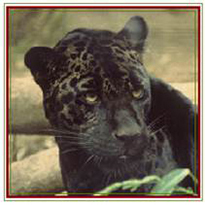
http://bigcatsatlarge.blogspot.com/201_04_01_archive.html
Description:
The Jaguar, also known as a Panther, is one of the largest big cats below tigers and lions. They generally are a rusty orange with black splotchy spots covering their body, similar to those of a leopard, with a white underbelly. Some Jaguars acquire unique coat pigmentation by being entirely black and appear to lose their spots, although when getting a closer look it is visible they are simply subdued. These less frequent ‘Black Jaguars’ are more commonly referred to as a Black Panther. Male Jaguars are on average around 8 feet long from nose to tail and weigh between 200-300 pounds as adults, with the female weighing much less at around 100 pounds and only reaching about 4.5-5 feet long. Jaguars are slightly shorter and a little brawnier than some of the other big cats including a shorter tail and a wide-set jaw that has been recorded as having the second strongest bite force of all mammals with only the hyena coming in at first.
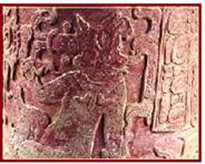
http://www.authenicmaya.com/maya_wargare.htm
History:
Jaguars, like many other animals, appear to have descended from an older decedent and are believed to share this Asian based ancestry with the leopard. The name Jaguar is actually based off of the work ‘yaguar’, from the Native Americans, meaning ‘he who kills with one leap’. The Jaguar was once very prominent in the lives of the ancient Maya as the God of the Underworld as well as taking on other forms in different cultures. The Maya would use the coat of the Jaguar as a sort of robe during ceremonies or to pronounce authority or a higher ranking in the community. Much artwork such as murals, stone statues, and pottery, have been found expressing worship of the Jaguar.
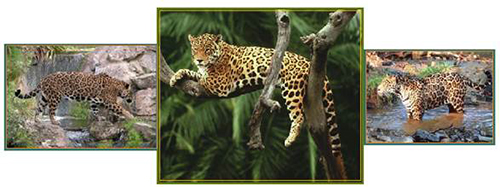 http://jaguarhabitatusa.wordpress.com/sciencepolic/campaign-biologists-spell-out-jaguar-habitat-needs/
http://jaguarhabitatusa.wordpress.com/sciencepolic/campaign-biologists-spell-out-jaguar-habitat-needs/
http://worldwildlife.org/species/jaguar
http://www.realmagick.com/jaguar-habitat/
Habitat:
Along with not being a very picky eater, this big cat is pretty comfortable weather in a lush tropical forest, vast and soggy flooded wetlands, or in a more open grassy plains habit. It is, although, more closely associated with being near a body of water for mid-day soaks in the stream or for catching small fish and mammals. The Jaguar also tends to prefer an area with trees for climbing and staying hidden from prey. Also the vegetation residing in forested areas, grasslands, and low marshlands help to increase the effectiveness of its camouflage. It currently resides in expansive territory passing through Mexico, Central and South America. The Jaguar also is at home in a few reserves and parks as well as Cockscomb Basin Wildlife Sanctuary in Belize.
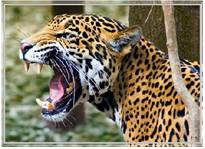 http://curiousanimals.net/animals/jaguars-intelligent-hunters/
http://curiousanimals.net/animals/jaguars-intelligent-hunters/
Behavior:
The Jaguar is a creature of a solitary nature being surrounded only by several females and warding off other males that may try to intrude. They tend to create territories expanding several miles and mark their borders by clawing the bases of trees or simply by their excrement. Jaguars are also nocturnal animals that prefer to hunt only during the night time hours. Unlike some of the other big cats the Jaguar doesn’t chase down its prey but instead will stalk a potential meal until the optimal moment arises when it can spring from its cover and attack. Jaguars will also mate all year long with the females having a gestational cycle of around 100 days. Once the cubs are about half a year old the mother will begin teaching them how to hunt and will perfect their skills over the next couple of years until they will retreat and begin their own life.
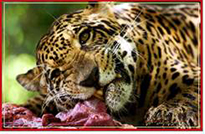
http://www.telegraph.co.uk/earth/earthpicturegalleries/6597218/Walking-with-jaguars-The-Comunidad-Inti-Wara-Yassi-animal-rescue-centre-in-Bolivia.html?image=7
Diet:
The Jaguar in particular to most big cats eats quite a wide variety of foods ranging in shapes, sizes, and habitats. They will usually try to go after a big meal to sustain them for a few days as they go back and feed. Larger mammals such as deer and tapir are its main choices but they have been known to go after cattle, sheep, and goat. The Jaguar will also catch fish and turtles in streams, monkeys, a variety of rodents, and birds are also a few other types of prey they will go after.
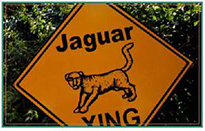 http://belizesanctuary.com/amenities
http://belizesanctuary.com/amenities
Conservation:
Unfortunately the Jaguar is very quickly heading in the direction of being on the list of extinct animals. The main cause of this is human tampering with both its environment, by deforestation for ranchers and farmers that in turn kill Jaguars for eating their cattle, and also by becoming prey to man. Poaching, or the hunting and killing of Jaguars is another factor that has depleted large populations all for the trading of its unique coat. Over the years several organizations have risen in order to protect the Jaguar by the creation of wildlife reserves ext. Belize created the world’s very first preserve specifically for Jaguars not to long after another first occurred when 2 jaguars were radio collared for study. Shortly after two jaguars from Belize were radio collared for study the worlds very first Jaguar Preserve was created, known as the Cockscomb Jaguar Preserve.
Works Cited:
Please note that the following references may have either been removed or relocated by the webpage owners since the time this student report was created.
- http://en.wikipedia.org/wiki/Jaguar
- http://animals.nationalgeographic.com/animals/mammals/jaguar/
- http://animal.discovery.com/mammals/jaguar-info.htm
- http://www.angelfire.com/folk/sunflowerfarm/ajaguar.html
- http://www.authenticmaya.com/maya_warfare.htm
- http://jaguarhabitatusa.wordpress.com/sciencepolic/campaign-biologists-spell-out-jaguar-habitat-needs/
- http://worldwildlife.org/species/jaguar
- http://curiousanimals.net/animals/jaguars-intelligent-hunters/
- http://www.nhptv.org/natureworks/jaguar.htm
- http://www.ehow.com/about_6321399_jaguar-diet.html
- http://www.panthera.org/species/jaguar